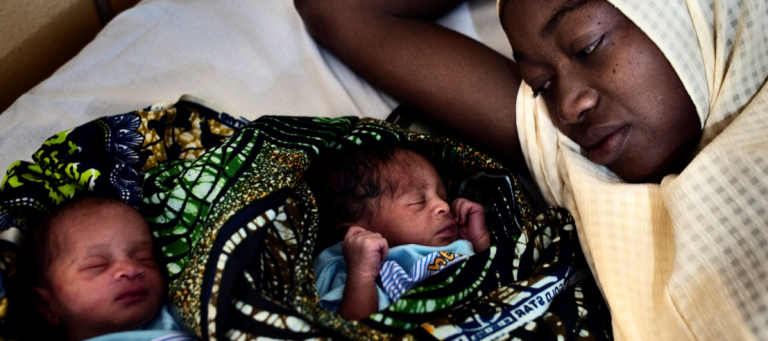In recent years, Uganda has implemented policies in line with Sustainable Development Goal 3.8.1:improving coverage of essential maternal and neonatal health services without imposing untenable costs on families.
Some tangible interventions to implement such policies include:
Dispensing Maama kits: These kits contain all supplies necessary for routine clean and safe deliveries, including gloves, sterile gauze, and cord care instruments.
Distributing Vouchers: Village Health Team member (VHT) provides vouchers to women in need of financial support around pregnancy. These vouchers keep costs associated with antenatal visits, delivery, and post-natal care to UShs4000 (US$1)
Despite these efforts, unexpected financial burdens are unfortunately common in many health facilities around birth. I spent time at Iganga District hospital – marked as a high performing hospital by the Ministry of Health – observing how unanticipated financial burden occur even when Maama kits and vouchers are supposed to function in a hospital.
In one example, a 25-year-old woman came into the hospital at 10:30 am with labor pains. The midwife examined her, called for the doctor due to previous history of Cephalic Pelvic Disproportion. This was the woman’s second pregnancy; her first was delivered through caesarean section. The doctor confirmed a caesarean section was necessary for the current pregnancy and indicated the procedure would take place in one hour.
There was a long delay to take her to the theatre, due in part because of a search for medical supplies that ended up being out of stock. Throughout, the mother appeared to be in great discomfort, although the medical situation did not call for an emergency delivery.
Although the woman and her husband came with a voucher, they still ended up paying for many expenses. The voucher system breaks down when the hospital is out of stock of necessary supplies, including a suture kit for surgery. It was not until 1.5 hours after the initial exam that medical staff advised him to purchase the necessary out of stock supplies from the pharmacy. The father inquired why he had to pay for supplies when the VHT instructed him that the voucher would take care of all costs around birth.
According to the midwife, whom I interviewed later, it is the hospital’s policy to find the funding for families that with vouchers. However, this process takes time to arrange and some medical situations do not allow for that time.The government has a policy of supplying “Maama Kits” to pregnant women. These kits are equipped with surgical gauze, five pairs of gloves, a razor and other supplies used during and after delivery for continued care of the mother and newborn.
However, Iganga District Hospital only receives 96 kits per 3 months but deliver 200 babies each month. According to hospital staff, additional kits could be requested from the MOH, if records could demonstrate need. None-the-less, the records remain incomplete as midwives are overworked and focused on providing adequate care to mothers and newborns.
The cyclical effects of insufficient human resources at the hospital has an impact on the supplies and equipment that the hospital is able to access. While Maama kits and vouchers maybe useful in some contexts, the primary support needed was human resources. Without additional midwives, implementing quality, affordable care is a challenge.
This blog is cross-posted from Makerere University Centre of Excellence for Maternal Newborn and Child Health

